Head Keywords: What Are They & How to Find Them
Keywords are a hugely important part of online search marketing. But to understand how best to narrow down your keyword research strategy you’ll need to know what “head keywords” are.
Head keywords, also called “head terms” in SEO, are a big part of maximizing your organic traffic while also staying competitive compared to other websites. They can be a popular search keywords that have a lot of search volume because they represent a broad topic or a well-known concept.
Head keywords can be extremely short searches, even consisting of just one word.
Head terms in SEO could represent any industry or niche or just about any topic. For marketers and online businesses that means short and simple keywords that can represent their core business. This means head keywords can be hugely important for driving traffic to your site, particularly for searchers who are just beginning their journey through the shopping funnel.
To better understand head keywords, it’s good to understand some basics of search behavior and keyword research.
What are keywords? What is keyword research? Understanding these concepts will help you know how to best approach your own head keyword strategy.
Keywords are the ideas and topics that represent your content or your website. They define what your content is about or clue-in search engines to what your content is about. Usually they are succinct nouns/subjects that can be boiled down into simply phrases or queries. If you have the right keywords in your site content, then search engines and searchers will be better able to find you.
Search habits can be divided into three main categories:
- Navigational search queries
- Informational search queries
- Transactional search queries
Navigational search queries are motivated by searchers who are using a search engine to get to a site or location. Usually they already know where they want to get to. For example someone might search “youtube” in Google or Bing, rather than directly entering “www.youtube.com” into their browser.
Informational queries are for simply getting facts or information. For example “what date is thanksgiving this year” or “how to separate egg yolks.”
Finally, transactional queries are for searches that are intended to lead to a purchase or online transactions. These include people searching for products, or services, or for anything where they might ultimately end up completing a monetary transaction online.
Head keywords and SEO
So what are head keywords in all of this? For any website, regardless of what vertical your target audience is in (navigational, information, transactional) you can identify head keywords that can represent high-value traffic. Essentially your main keywords.
In fact, for many websites, you may find that you are already ranking for some head keywords. Search keywords that are responsible for bringing in traffic to your top-level pages. These can even include branded search terms (navigational).
The term “head keyword” comes from the relationship between high volume search words and low volume keywords that have gotten the name “long-tail” keywords. In keyword research and in the search marketing world head-and-tail keywords have come to describe the spectrum of search words.
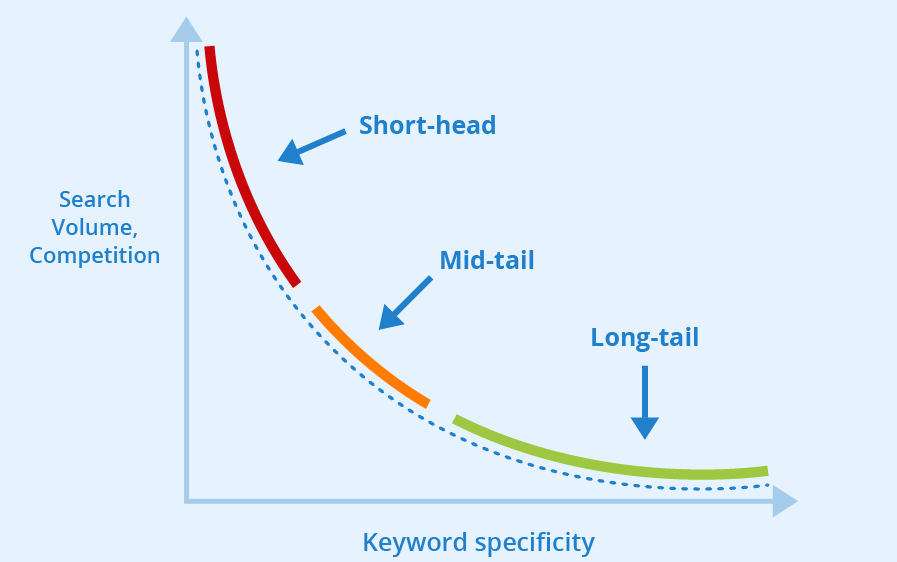
Via SEObility
Longtail keywords are search queries with 3+ words that have low search volume but are much more specific in intent and are far less competitive. Head Keywords on the other hand might only be 1 keyword or two at most. A super simple search engine entry that people use just to get their search session pointed in the right direction.
The truth is that most websites will have a huge portion of their traffic come from long-tail keywords. In fact, in many cases these keywords can be more valuable because they’re much easier to obtain, easier to get on page 1 for, and because they’re more likely to lead to a transaction or revenue.
Find your head keywords
For brands or business that are looking to begin or build out their SEO, head keywords will inevitably be a part of their keyword research. Keyword research is an important beginning step that can help you identify what valuable keywords are ideal for your specific website and what keywords you should target when you build out your site content.
After you’ve done keyword research you can begin to optimize your on-page content, optimize keyword density, and monitor your organic traffic to measure results for your KPIs.
This is where you can use Google’s Search Console to help identify your SEO head terms. In Search Console, go to the “Performance” report (sometimes shown as “Search Results”) on the left site navigation pane.
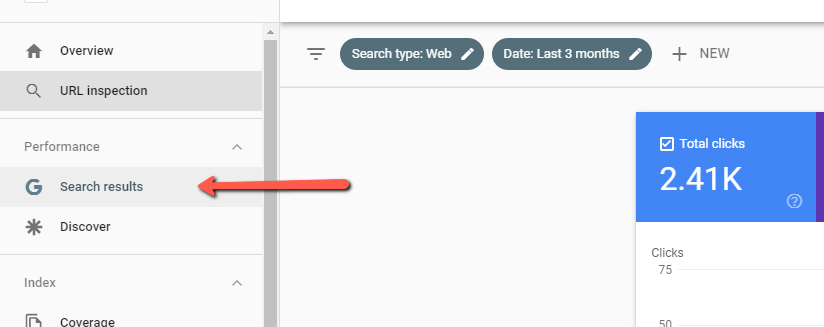
The report will show you a table with tabs for “Queries,” “Pages,” “Countries,” “Devices,” and “Search Appearance.” The queries table defaults to show you which search queries your domain is getting the most clicks for, as well as how many impressions they are receiving.

Here you can see the top performing keywords for your site and narrow down what keywords you might be ranking for. Search Console also gives you an option to filter keywords by word, clicks, impressions, and other metrics.

Here’s what these metrics are:
- Clicks represent the number of times a searcher clicks on your link from the Google search results page for that particular search term.
- Impression are defined as how many links to your site a user saw on Google search results (even if the result was not scrolled into view). Even if they didn’t click on your link, it may have still made an impression on them.
- CTR stands for click-through-rate and is a measure of how many clicks the site has received, divided by the number of impressions received.
- Average Position means the average position of the topmost result from your site for a given keyword.
You can use these metrics to understand what head terms in SEO you are best performing for, and even which important head keywords are underperforming. Although Google doesn’t adhere to definitions for head-and-tail keywords, you can take the keywords you find in Search Console and use them to help you find your main head keywords.
Expand the table to show your top 500 keywords and select “Export” in the top right corner.
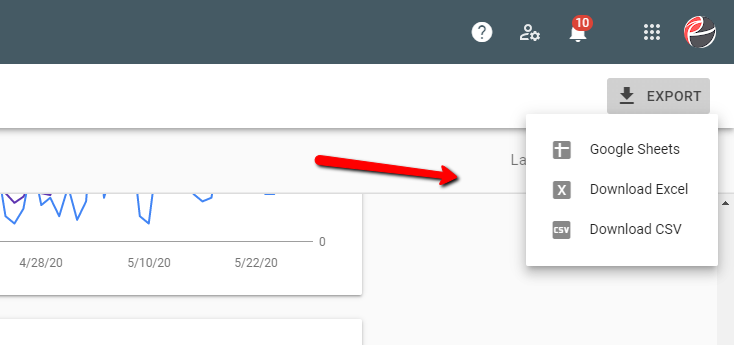
Another popular keyword research tool is Google’s Keyword Planner.
Keyword Planner is designed for finding target keywords for Google paid ad campaigns, but it can also be used to get some basic understanding of search traffic for SEO keywords as well. You can take your Search Console keywords and load them into Keyword Planner to find average search volume.
You list of head keywords can include terms from Search Console, your site, competitor research, and terms you collect from your own assessment of your site and what you think best fit your business.
In the Google Ads platform, under “Keyword Planner” you can place your list of keywords in the “Get search volume and forecasts” field to discover traffic data.
To help discover new keywords you can user the “Discover new keywords” field (duh) and enter keywords/URLs so that Google can provide keyword suggestions.
Using this strategy, we can discover both important head keywords, but also a spread of good head and tail keywords with some in between. Look at the example below, where “SEO” is one of our main head keywords, but something narrow like “search engine optimization services Australia” is much more long tail.

Like in this example, long-tail keywords are often less competitive and the “searcher intent” is much more clear. For an SEO agency company in Australia, that search query might be much more valuable than something like “SEO” since it indicates that those searchers know exactly what they are looking for and are ready to begin a transaction.
The importance of head keywords and the search funnel
So now you know what head terms are in SEO. And the difference between head and tail keywords means that both can easily be a part of your search marketing efforts.
But if head keywords are so competitive, then what’s the value? Longtail keywords often have the advantage of being easier to rank for, as well as demonstrating clear searcher intent. What about head keywords?
Many businesses focus on high-volume head terms because they offer the potential for a much greater amount of traffic, which could mean more business. And this is true, they do offer more traffic, but it’s often traffic that’s not as likely to lead to a conversion. However, they also allow you to get your brand in front of searchers who are starting their journey at the top of the search funnel.
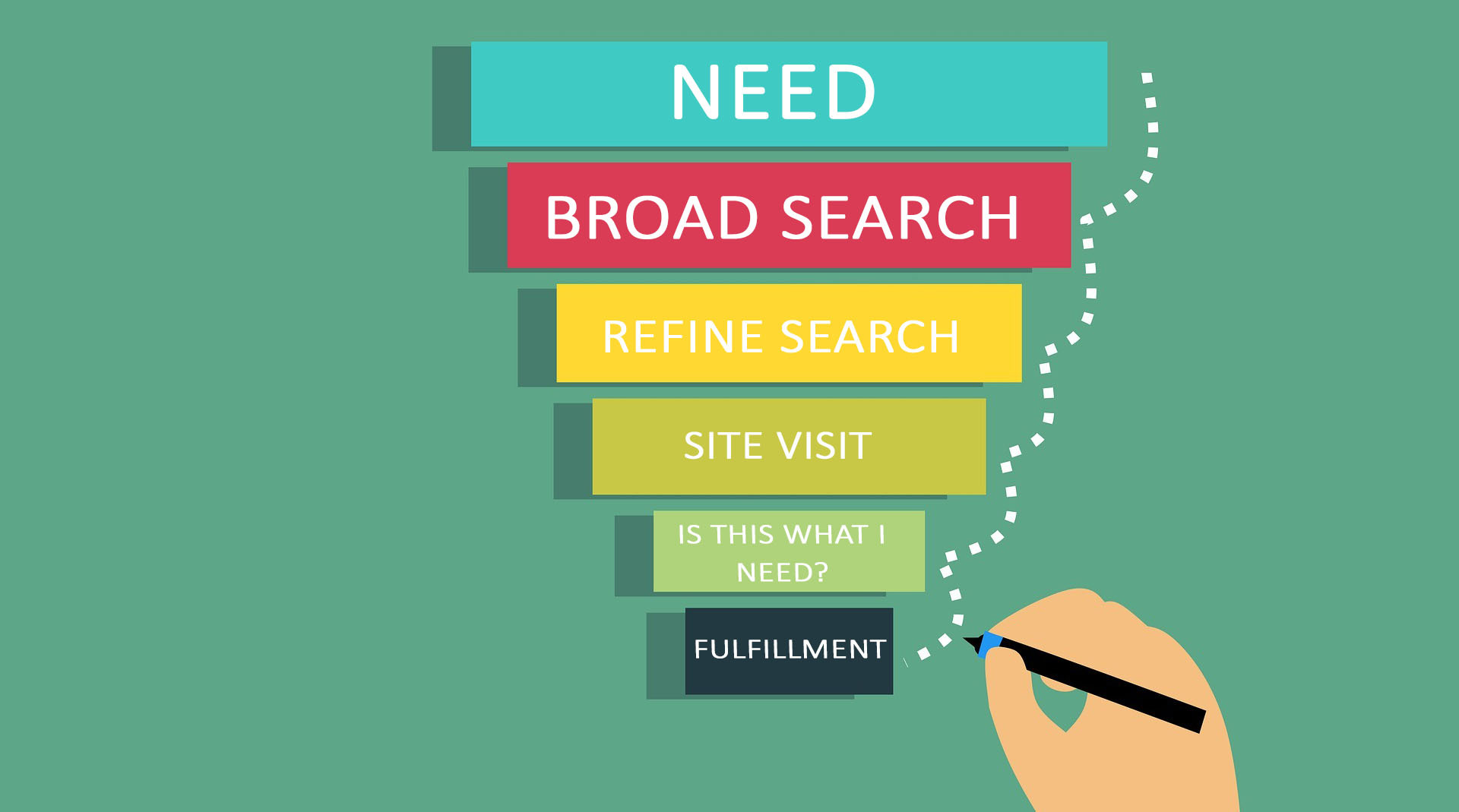
Common search behavior means that people most often don’t buy the first product they look at during a search, and that they don’t buy from the first site they visit right away either. Instead they’ll begin by broadly researching what they are looking for, finding options from multiple sites, narrowing down what specifications they want, looking at reviews, and comparing prices before they finally purchase. They may not even buy the same day.
However, ranking for head terms with SEO strategy means that if you can make your site visible at the first stage of that process, it’s possible they can come back to your site with subsequent long-tail searches. It also means that they may continue their search on your site instead of doing another search on Google.
This is what the search funnel, or conversion funnel, is. It describes the behavior of starting your shopping experience somewhat broadly and narrowing down your hunt before finding exactly what you want and clicking “buy now.”
Ranking for high-value head terms means that your brand will be associated with those keywords and that if people begin their search with you, there’s a chance they may circle back and end with you as well. The added benefit is that you may at the very least be building brand recognition, even for visitors that don’t convert.
Optimizing your site for head keywords
Site structure is a significant part of SEO, since the way that you layout your sight not only effects user experience and navigation, but also how search engines understand your site, index URLs, and determine what pages are most important.
As a general rule, the home page, nav-bar pages, and top-level pages located a minimal number of clicks away from the homepage are going to be considered your most important pages in the eyes of Googlebot.
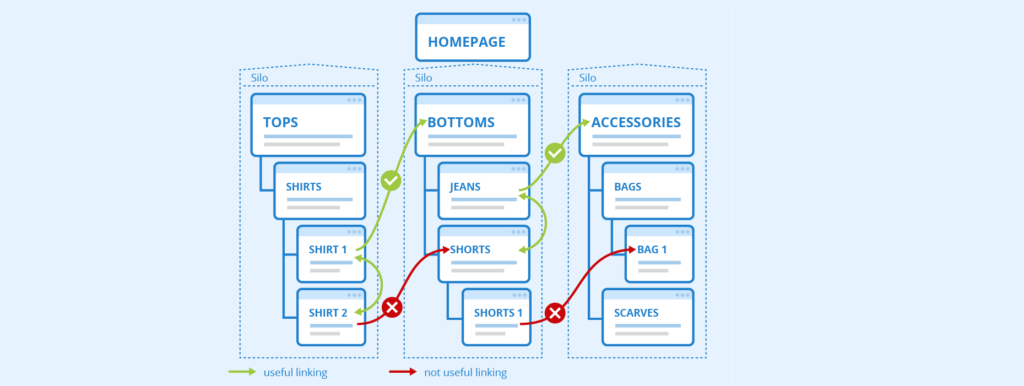
Via SEObility
This sort of structure is often called the “theme pyramid” style structure and is very common for websites. According to Google’s Webmaster Trends Analyst, John Mueller, this sort of structure is important for helping Google understand what pages are important. Giving context to your site’s hierarchy can help high-value pages rank higher for head keywords and give your SEO a performance boost.
For SEO campaigns and marketers, you’ll want to place your valuable head keywords on these top-level pages in order to get the most effectiveness out of them. Lower level pages, and product level pages are more suited for long-tail keywords.
Of course Good SEO also means paying attention to other important best-practices as well. You’ll want to make sure that your head keywords are relevant to those pages and are accurate. The intent behind those keywords means you’ll want to ask yourself whether searchers using your target head keywords will be satisfied by the content on your page and whether they’ll leave having found what they are looking for.
From there you’ll be able to optimize your site with head keywords using typical on-page SEO best practices. Incorporate these keywords with your site in a way that is helpful to visitors, and not just an attempt to manipulate your SEO rankings:
- Create meta-title tags for these pages that are clear, accurate and helpful for searchers but that also include your target keywords. These meta tags are an important ranking signal for search engines.
- Build out page content and text with keywords to help search engines understand the page topic and to associate that page with your target SEO head terms. Make sure that these keywords fit naturally and that your content is expert, authoritative, trustworthy, and valuable to visitors.
- Avoid “cannibalizing” head keywords by placing them across multiple pages on your site. This will dilute your ability to rank for those words and you’ll essentially be competing against yourself. Each page should focus on one ‘topic.’
- Include valuable head keywords in links and in-content anchor text links where fitting. Since search engines use links as a ranking signal, and because links pass ranking authority to their destination page, placing important keywords in the anchor text can help search engines associate that page with important keywords.
A professional search engine optimization strategy will be able to help you improve rankings for your head keywords. By starting with a well thought out keyword research strategy like we described above you’ll be able to find head keywords that are best suited for your site, and even ones that your site’s pages are already ranking for.
With a good SEO strategy, you’ll be able to improve these rankings and gain new ones.
Learn More
Learn more about gaining new rankings for head keywords by contacting us! Our team can help you grow your business online with professional keyword research and a strategic SEO campaign. Call today to get started or check out our client testimonials.
